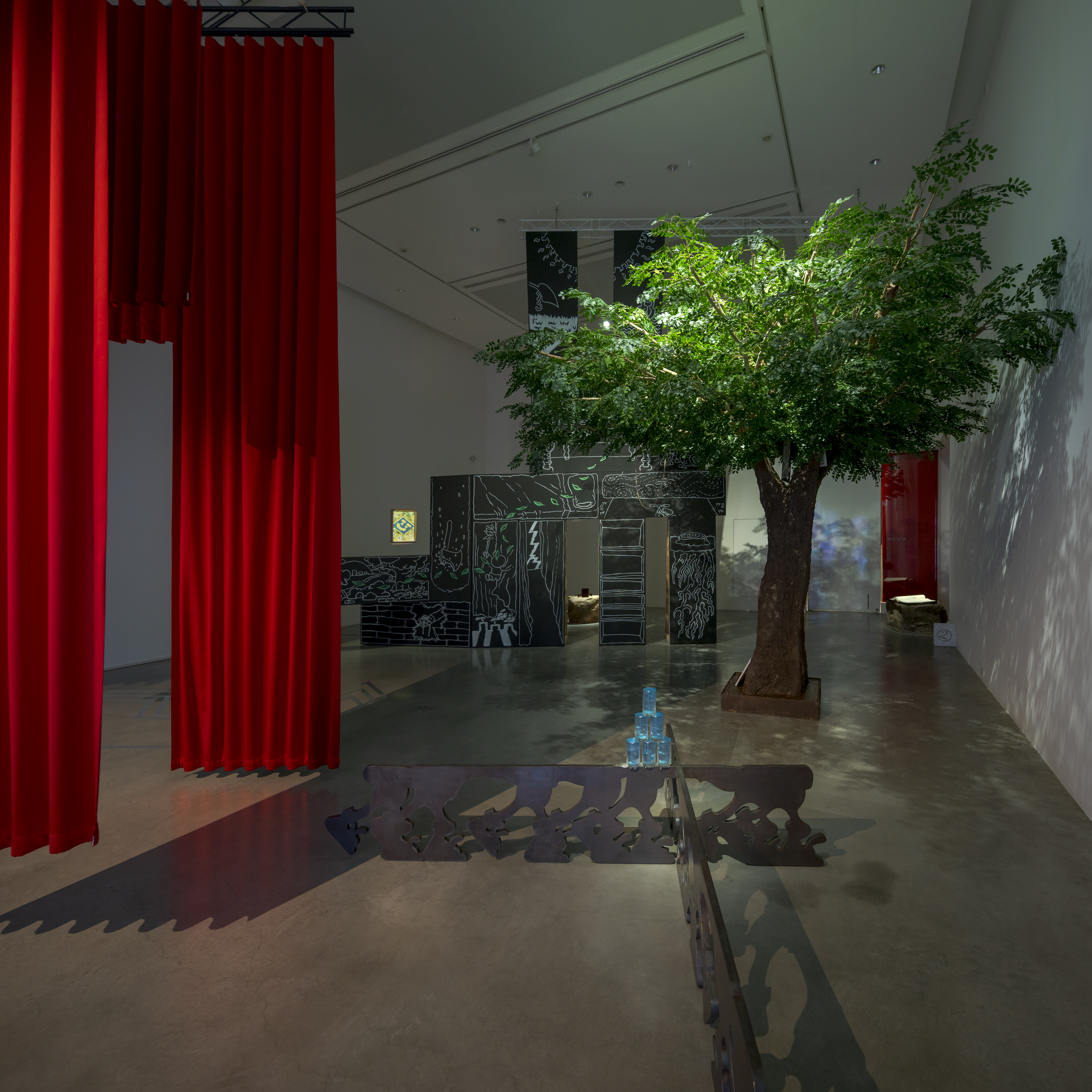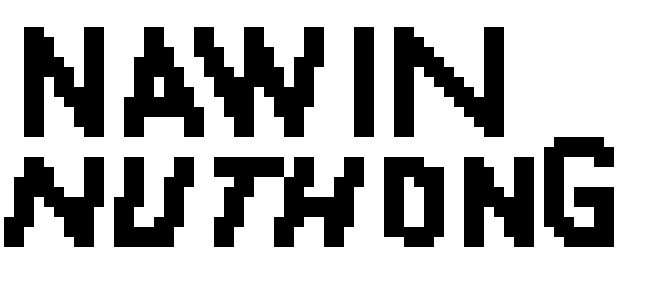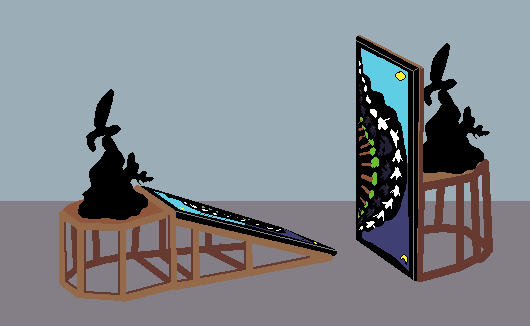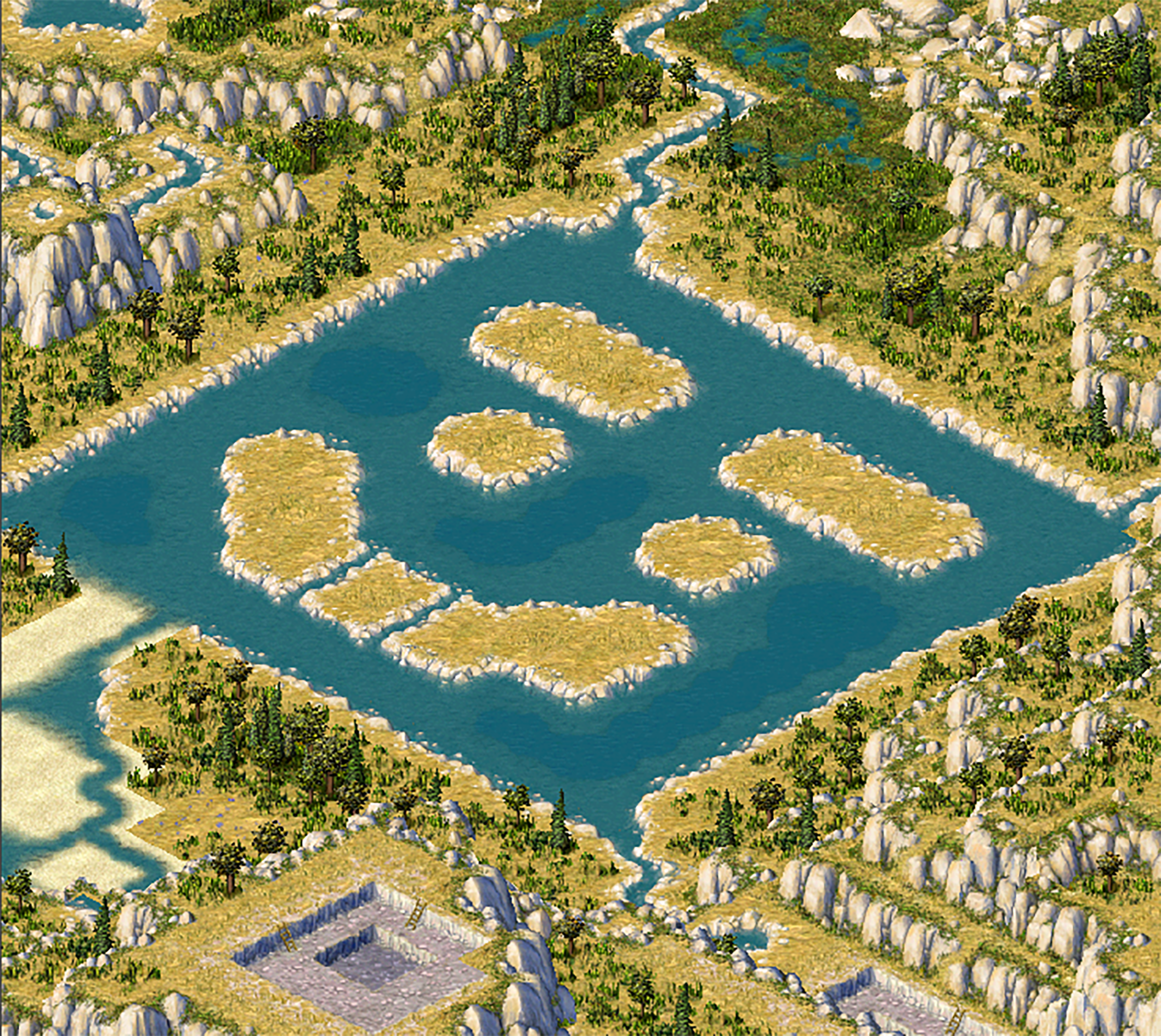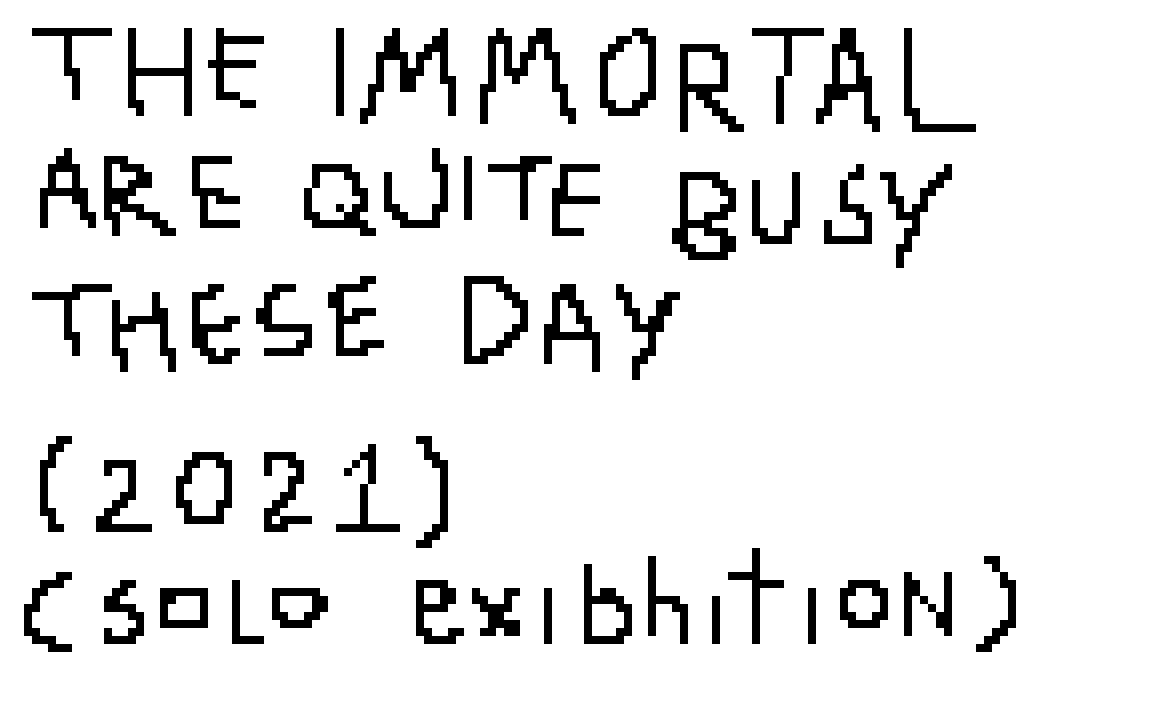Fountain Foundaion
Solo Exibhition at Bangkok CityCity Gallery
11.01.2025 - 01.03.2025

︎︎︎poster
The Inquiry delves into the shifting landscapes of cultural memory, speculative narratives, and the fragile intersections of history and perception. Through a suite of multimedia works—including animated GIFs, speculative fictions manifested as comics, and sculptural installations—Fountain Foundation interrogates the structures that shape our collective understanding of history. In doing so, Nuthong invites audiences into an intricate world where myth, materiality, and media conspire to challenge the linearity of time and the hierarchies of historical representation.

︎︎︎ “Fountain Foundation” (2025)
cardboard sculpture.

︎︎︎
“The School play”
(2024)
The story as first appear of the Exibhition concept.
![]()
The story as first appear of the Exibhition concept.
︎︎︎Exibhition view
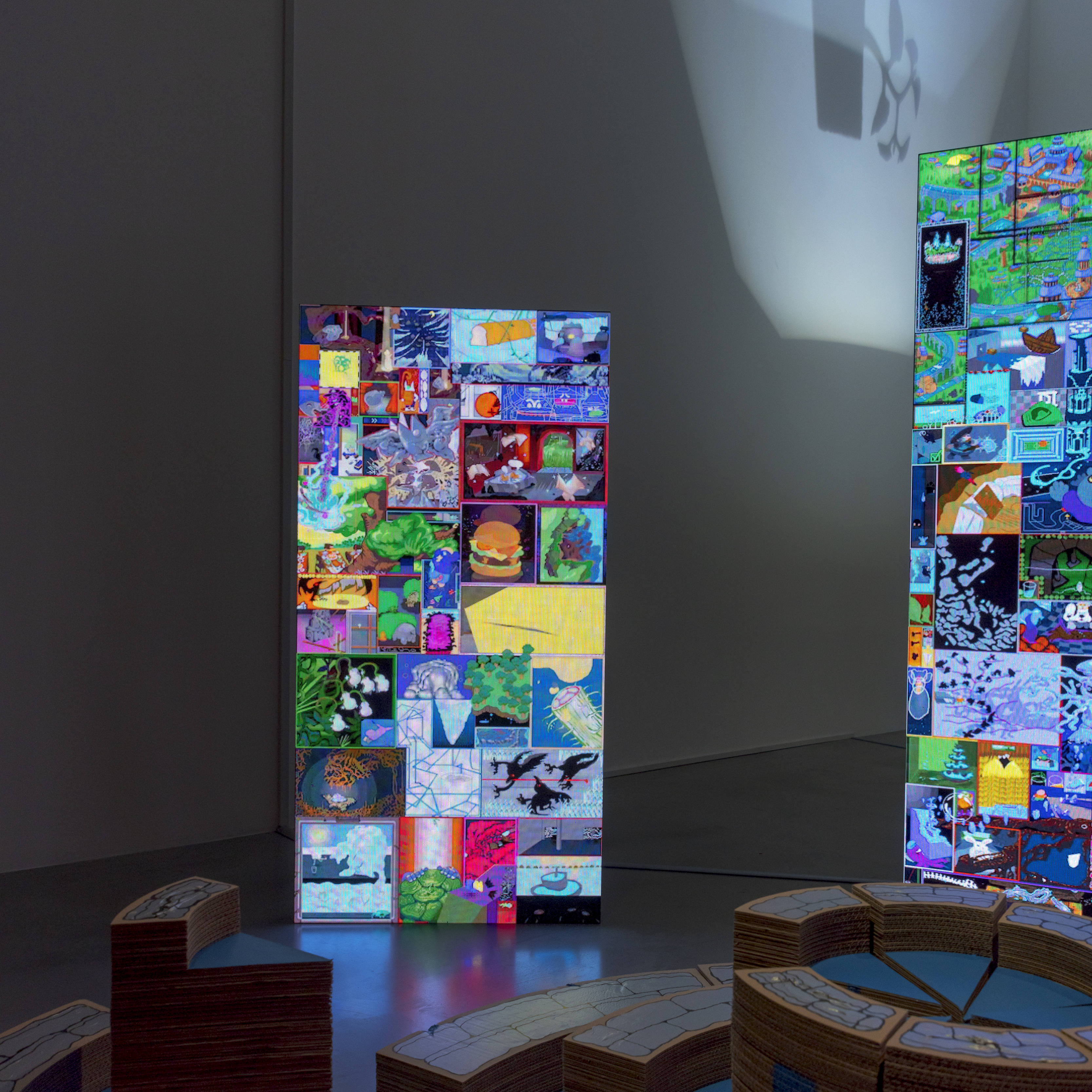



︎︎︎Exibhition view
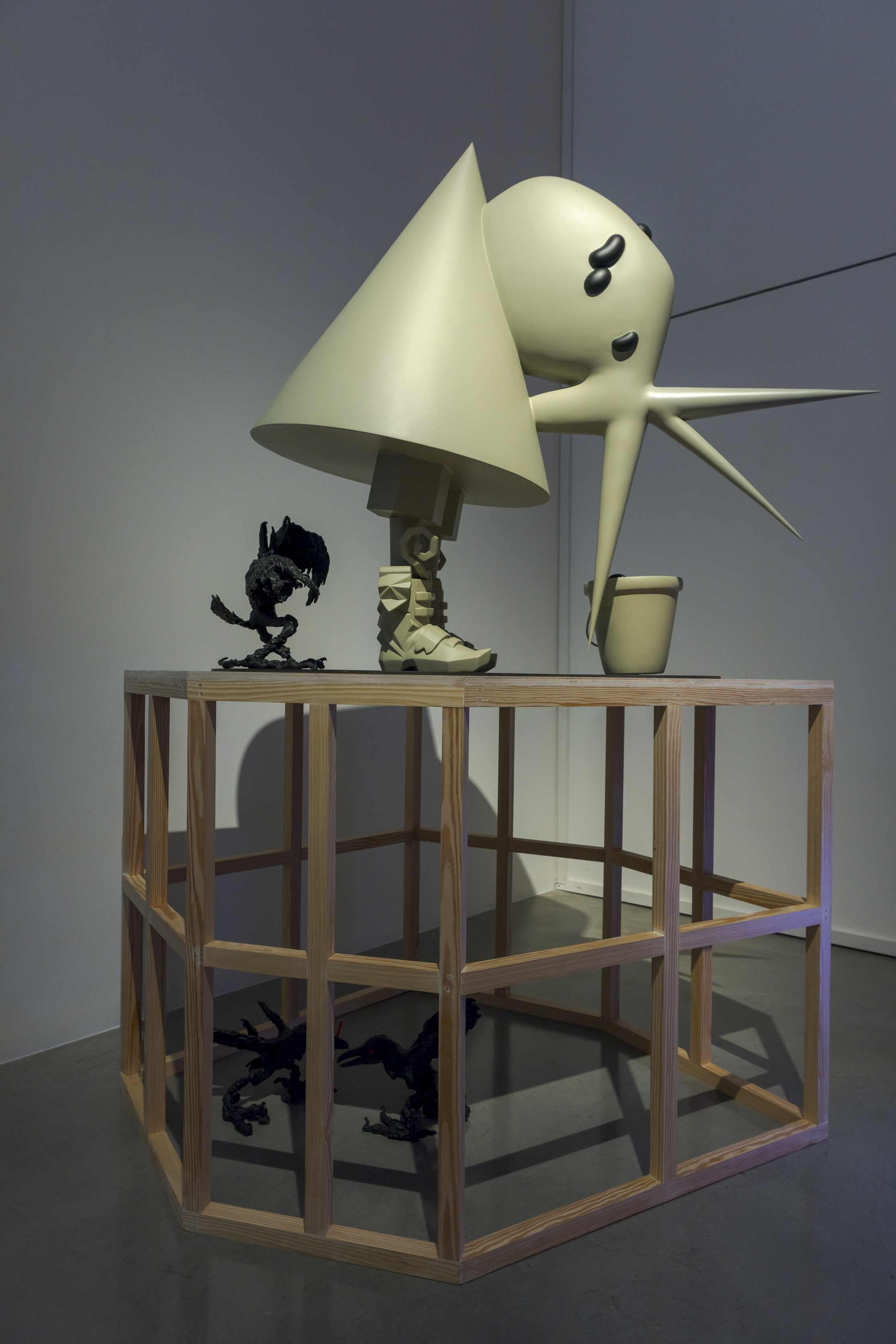
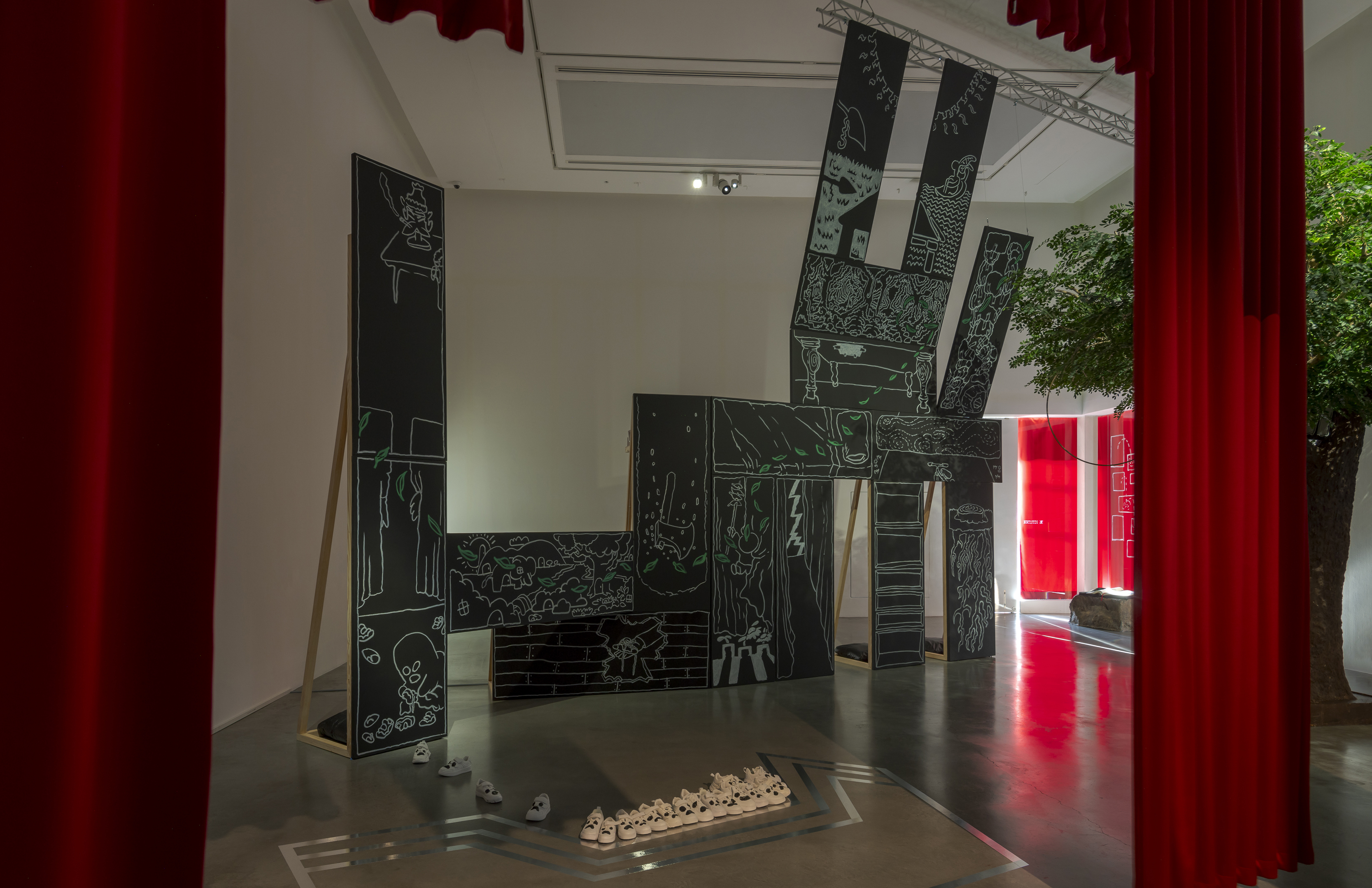

︎︎︎ Sketch of “Carboard Citadel” (2025)
︎︎︎photo from camera film, that we give the children on the opening day, as a gift of “Children National day”.


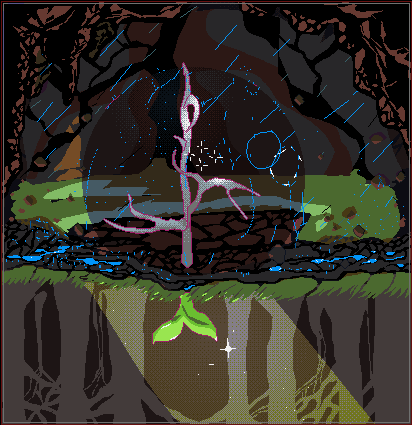
︎︎︎capture from “Island Foundation” (2025)
︎
The notion They Have Clocks, We Have Time—adopted from the title of issue 36 of The Funambulist—provided a conceptual stepping stone for the developments of Fountain Foundation, catalyzing Nuthong’s deeper explorations of time. This evocative phrase critiques the colonial imposition of standardized timekeeping—a system that fragments, measures, and commodifies time while shaping historical narratives through linear constructs.
For Nuthong, however, the significance of this critique lies not in opposition but in its capacity to open pathways for understanding time as multifaceted and relational. By introducing the notions of chronocentricity—the human tendency to privilege the present as the ultimate point of reference—and chronosonder—the transitions between functional and nostalgic states of objects, memories, and practices—Nuthong expands the vocabulary of his practice. These concepts inform the narratives within Fountain Foundation, where time is presented not as a fixed or universal measure but as a layered and cyclical force that resists singular interpretations.
The fountain emerges in the exhibition as both a motif and a metaphor for continuity and change. Its cycles of cascading water reflect the interplay of hope and curiosity, proposing a view of culture as perpetually in flux. Within this framework, the fountain becomes a space for revisiting and rewriting history—an ongoing negotiation between permanence and transformation. Amidst the layered worlds and myths embedded in the exhibition, allegories driven by fictional characters and whimsical scenarios reveal metaphors for the ways cultures evolve, adapt, and resist.
The exhibition also reflects on two formative stages of his childhood—primary school and university—as pivotal in shaping his archeogaming methodology and its connection to stagecraft. The exhibition draws from his experiences of stage blocking and interaction. His sculptures, covered in textured surfaces and filled with metaphorical “literary dust,” evoke the interplay between theatricality and game design. The stage emerges as a ritualistic and world-building space, intertwining narratives, backstage dynamics, and pre-production processes. Early cinema aesthetics further inform the exhibition, with the stage functioning as a threshold for stories—compressing and flattening narratives into singular moments before re-expanding them in new forms.
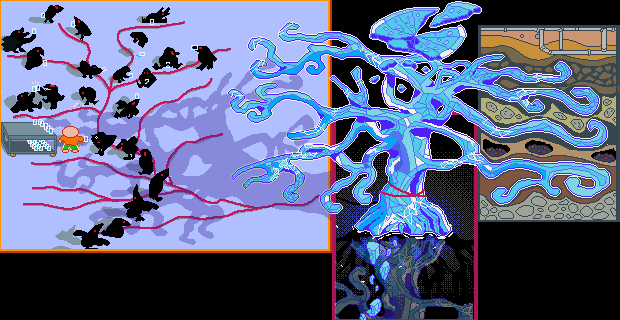
︎︎︎capture from “ Island Foundation ” (2025)
By exploring the intersections of diverse cultural symbols and the tensions between tradition and modernity, Fountain Foundation highlights the complexities of cultural exchange and adaptation, challenging the linearity and perceived neutrality of historical narratives. Nuthong positions time and history as dynamic, contested spaces, disrupting the hierarchies inherent in colonial and post-colonial discourse, encouraging viewers to engage with history as a multiplicity of perspectives and temporalities rather than a singular, fixed account.
In conjunction with the exhibition, the public programme, Kal-Pan-Puan (There is no perfect mystic past.) (Kal-Pan-Puan can be translated into English as Chaotic Time) will also initiate a reflective inquiry into history, mythology, and the interconnection between stage and state. At its heart A Dialogue on Art with a Historian, a panel discussion featuring Thongchai Winichakul, a distinguished scholar in Southeast Asian studies and a pivotal voice in post-colonial discourse will take place on Saturday February 1, 2025 at the gallery. Renowned for his groundbreaking work, Siam Mapped: A History of the Geo-Body of a Nation, Winichakul’s perspective bridges the realms of art, history, and the fluid dynamics of cultural representation. The program invites audiences to engage critically with the exhibition’s themes, creating a space for dialogue that interrogates the temporalities of history and the structures that shape collective memory, while opening new pathways for understanding time, myth, and their continued resonance in contemporary life.
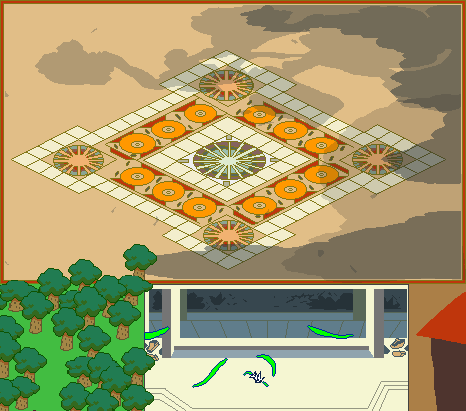
︎︎︎capture from “Bazaar” (2025)

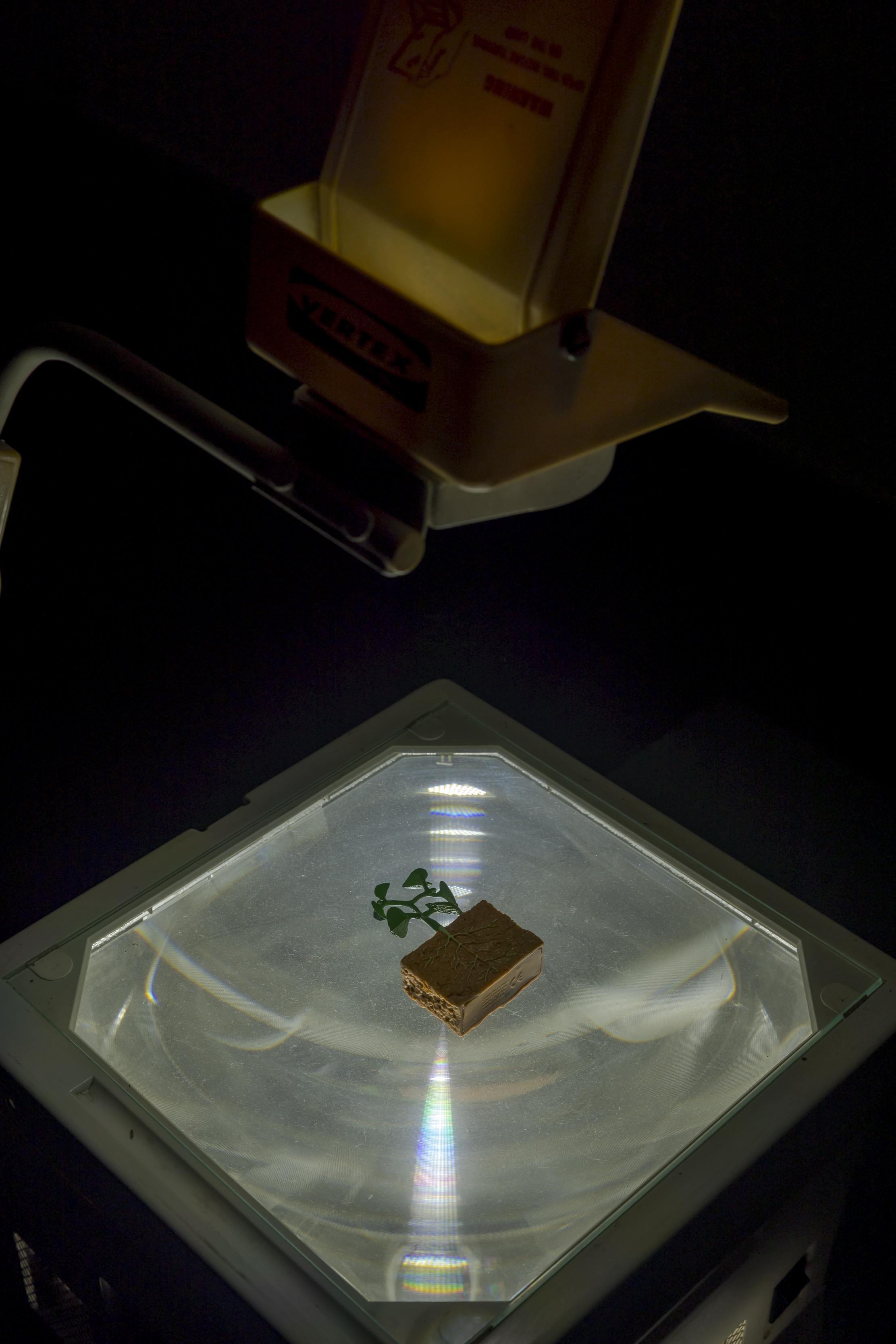
︎︎︎Exibhition view

︎︎︎Exibhition view

